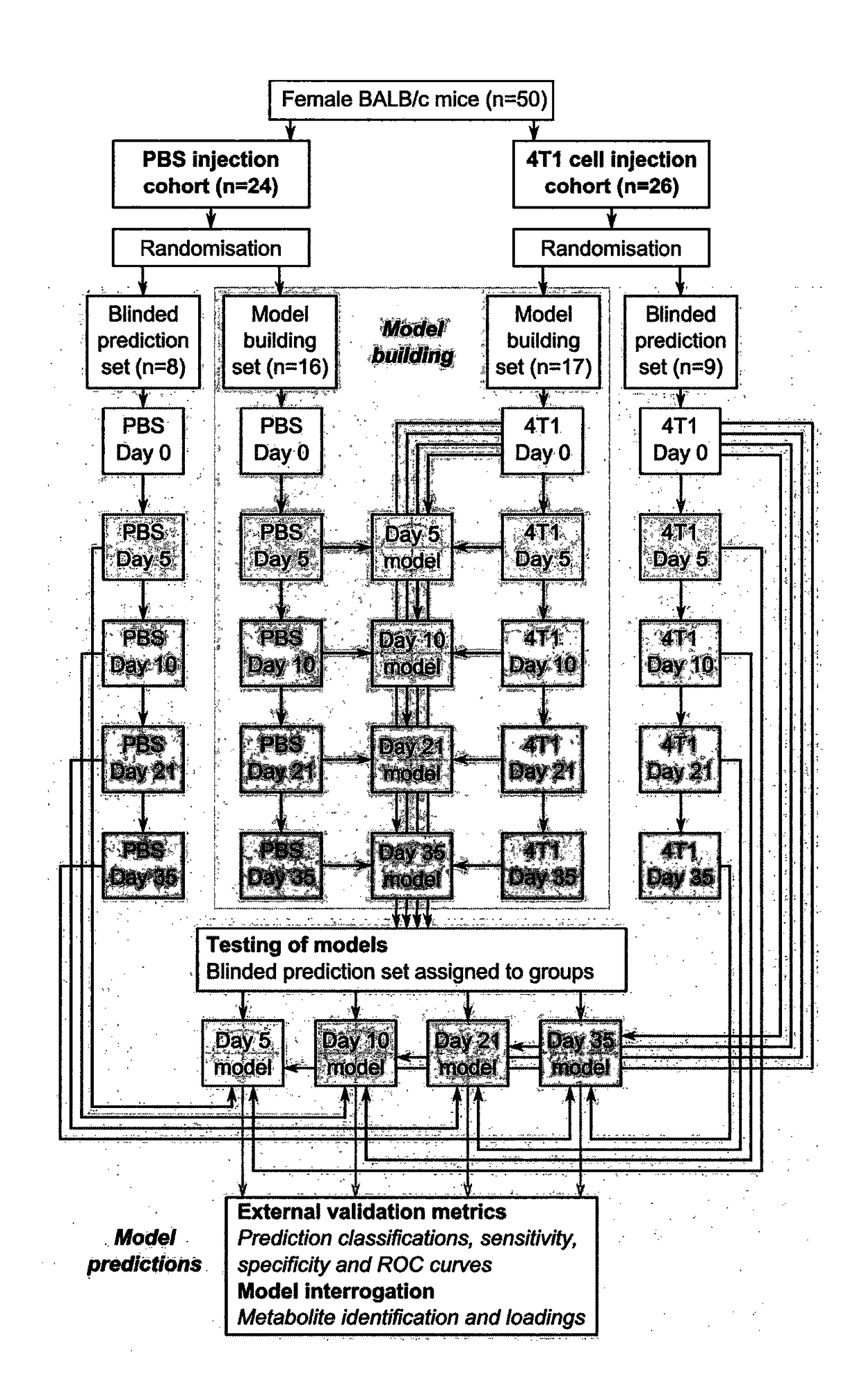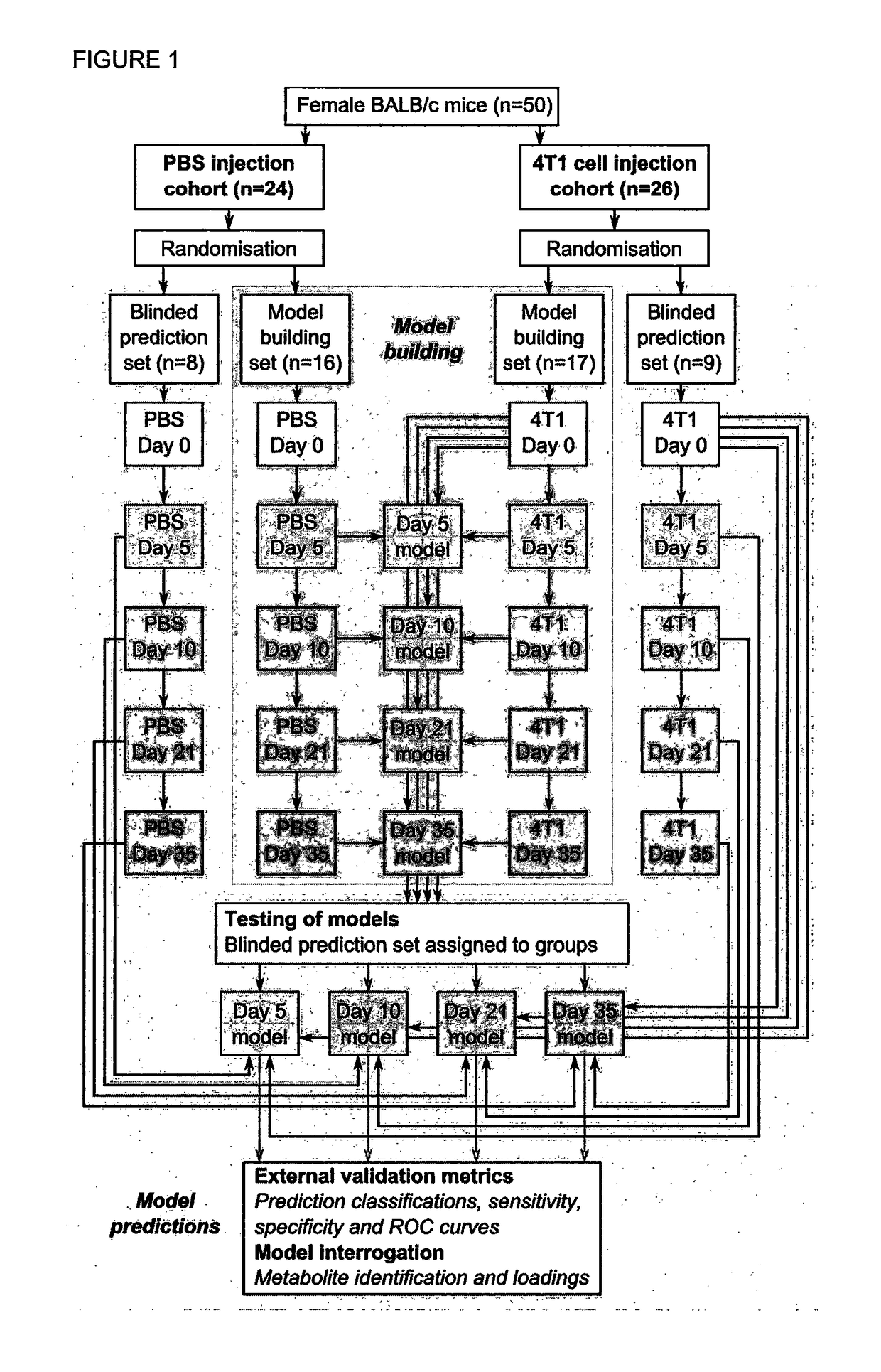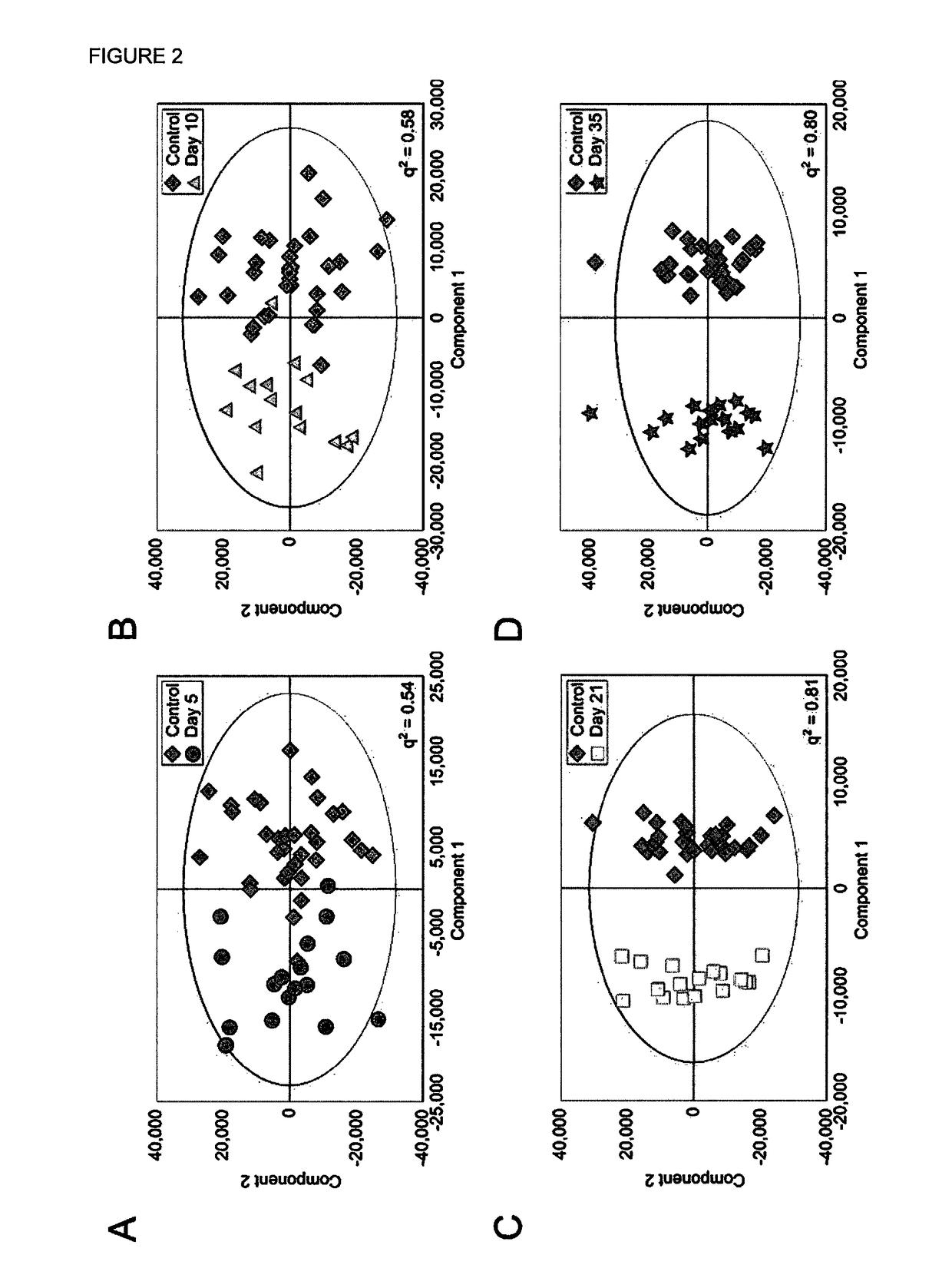Method for diagnosing a brain tumour in a human
a brain tumour and human technology, applied in the field of human brain tumour diagnosis, can solve the problems of poor prognosis, significant hurdle, and difficult clinical challenge for brain metastases, and achieve the effect of improving prognosis and effective and/or reliable methods
- Summary
- Abstract
- Description
- Claims
- Application Information
AI Technical Summary
Benefits of technology
Problems solved by technology
Method used
Image
Examples
example 1
Intracerebral 4T1-GFP Model Timecourse
[0317]A focal area of metastatic colonies was induced in the striatum of mice injected intracerebrally with the 4T1-GFP cells. Tumours initially grew very focally before beginning to disseminate from the injection site, by days 21 and 35, by growing adjacent to vessels along the perivascular niche, as described previously (Serres et al. 2012). Mice showed no significant clinical signs or weight loss throughout the experimental time course.
Intracerebral 4T1-GFP Urine Analysis and Modelling
[0318]Four Orthogonal Partial Least Squares Discriminant Analysis (OPLS-DA) models were constructed separating NMR spectra of urine samples obtained from mice 5, 10, 21 or 35 days after 4T1-GFP cell injection from their respective control cohorts. The study design, including control groupings, is shown in FIG. 1. All four models were significantly predictive with models from later time points being stronger than those from earlier time points (FIG. 2). For days ...
example 2
[0327]In order to validate the proposed biofluid metabolomics approach for the early detection of brain metastasis, two further experimental models were considered: (i) metastatic human breast carcinoma cells (MDA-231-BR-GFP) injected intracerebrally in SCID mice; and (ii) metastatic mouse melanoma cells (B16F10) injected intracerebrally in syngeneic C57BL / 6 mice.
Methods
[0328]For each model, urine samples were collected from animals 10 days after intracerebral injection with tumour cells (MDA-231-BR-GFP, n=5; B16F10, n=6) or PBS-vehicle alone (n=6 and n=5, respectively). Samples from naïve animals (n=5 for each cell line) were also collected. Samples from naïve and PBS-injected animals were combined into a single control cohort, as for the 4T1-GFP models (see Example 1). In each case, OPLS-DA models were constructed and q2 values determined. Integral regions contributing strongly to each separation were identified.
Results
[0329]In each case, models with q2 values greater than the def...
example 3
[0332]In order to validate the repeatability of the intracerebrally injected 4T1-GFP-based models, a small set of animals was used to replicate the models. This second cohort of animals, hereafter referred to as Cohort B, was prepared by an independent researcher (AMD) and is thus distinct from the cohort used for the main study, hereafter referred to as Cohort A.
Methods
[0333]Cohort B included urine samples from female BALB / c mice collected 10 days after intracerebral injection of either 4T1-GFP cells (n=6) or PBS vehicle alone (n=5), as well as samples from age-matched naïve mice (n=5). The samples from the PBS-injected animals and the naïve animals were combined into a single control cohort, as described in the main text (n=10). Cohort B is independent to cohort A in four important ways: (i) the independent researcher performed all scientific steps including cell culture, animal handling, solution preparation and sample analysis; (ii) cohorts A and B were temporally separated by >...
PUM
| Property | Measurement | Unit |
|---|---|---|
| pH | aaaaa | aaaaa |
| pH | aaaaa | aaaaa |
| pH | aaaaa | aaaaa |
Abstract
Description
Claims
Application Information
 Login to View More
Login to View More - R&D
- Intellectual Property
- Life Sciences
- Materials
- Tech Scout
- Unparalleled Data Quality
- Higher Quality Content
- 60% Fewer Hallucinations
Browse by: Latest US Patents, China's latest patents, Technical Efficacy Thesaurus, Application Domain, Technology Topic, Popular Technical Reports.
© 2025 PatSnap. All rights reserved.Legal|Privacy policy|Modern Slavery Act Transparency Statement|Sitemap|About US| Contact US: help@patsnap.com



